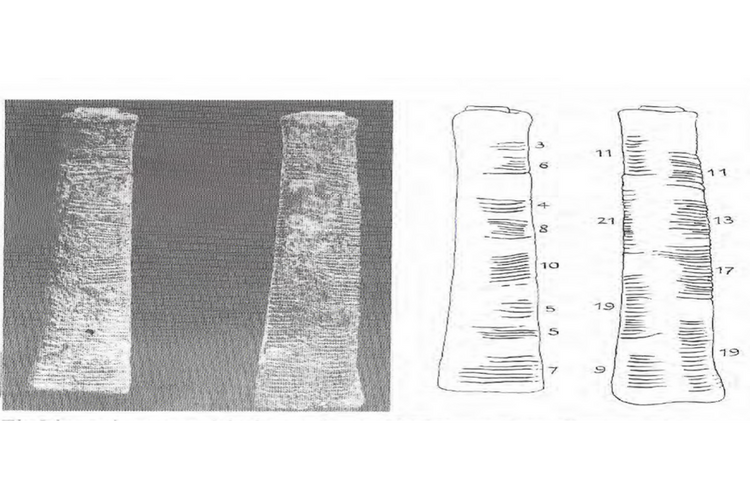
Early African Mathematics in the Congo
Early evidence of counting or a form of mathematics was first discovered at the fishing site of Ishango, near Semliki river which flows into Lake Edward in the present day Democratic Republic of Congo. A bone tool with several notches arranged in a pattern. The bone has three separate columns, each consisting of sets of notches arranged in distinct patterns. One column has four groups composed of eleven, thirteen, seventeen and nineteen notches. The third column has notches arranged in eight groups in the following order: 3, 6, 4, 8, 10, 5, 5, 7. The 3 and 6 are close together, followed by a space then the 4 and 8, also close together, then another space followed by 10 and two 5’s. This arrangement seems to be related to the operation of doubling. Some believe the three columns of asymmetrically grouped notches imply that the implement was used to construct a numeral system. Dr. Jean de Heinzelin who discovered the artifacts concluded the operation was related to prime numbers and doubling.
The central column begins with three notches and then doubles to 6 notches. The process is repeated for the number 4, which doubles to 8 notches, and then reversed for the number 10, which is halved to 5 notches. These numbers may not be purely random and instead suggest some understanding of the principle of multiplication and division by two. The bone may therefore have been used as a counting tool for simple mathematical procedures.
Some archaeologists and historians believe it may have been related to a lunar calendar. Given that the Congo region was primarily agricultural it makes sense that farmers wanted to track months and seasons.
During earlier excavations at the Ishango site in 1959, another bone was also found. It is lighter in color and was scraped, thinned, polished, and broken on one end, revealing it to be hollow. The artifact possibly held a piece of quartz like the more well-known bone or it could have been a tool handle. The 14-cm long bone has 90 notches on six sides, which are categorized as “major” or “minor” according to their length. Jean de Heinzelin interpreted the major notches as being units or multiples and the minor notches as fractions or subsidiary. He believed the bone to be an “interchange rule between bases 10 and 12.



1 Comment
by Afrogal
Remarkable progress in our history. The story of Africa.
Comments are closed.